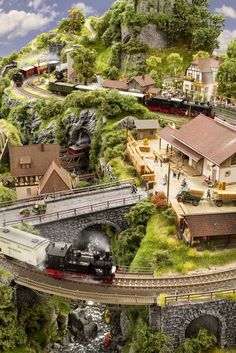Starting a model train hobby is an exciting venture, and choosing the right scale can significantly enhance your enjoyment and satisfaction. Each scale offers a unique experience, whether you’re looking for detail, space efficiency, or ease of handling. Let’s chug along into the world of model trains and discover which scale might be the best fit for you as a beginner!

Why Scale Matters
In model railroading, the scale refers to the proportionate size of the model in relation to the real train. It affects everything from the amount of space you need, to the cost, to the availability of accessories and tracks. Here are some popular scales and why they might be the perfect choice for a newcomer:
1. HO Scale (1:87)
- Popularity: HO scale is the most popular scale worldwide, making it easy to find a wide variety of trains, kits, and layouts.
- Balance: It offers a great balance between size and detail. The trains are small enough to fit a decent-sized layout in a typical room, yet large enough to allow for intricate detailing and easier handling.
- Community and Resources: There’s a huge community of HO scale enthusiasts, which means lots of advice, tutorials, and inspiration for beginners.
2. N Scale (1:160)
- Space Efficiency: If you’re limited on space, N scale is a fantastic choice. It’s nearly half the size of HO scale, which means you can pack more track and scenery into the same amount of space.
- Detail: Despite their small size, modern N scale models are incredibly detailed and offer high-quality running characteristics.
- Versatility: Ideal for those who enjoy scenic layouts, as the smaller size trains allow for more complex landscapes relative to their size.
3. O Scale (1:48)
- Visibility and Ease of Use: O scale models are larger, making them easier to work with, particularly for those with vision or dexterity issues.
- Detail: They offer a high level of detail, which can be very satisfying for those who appreciate a more visually impactful model train.
- Historic Appeal: O scale has a nostalgic aspect, as it was very popular in the early 20th century.
4. G Scale (1:22.5)
- Durability: Often used for garden railways, G scale trains are built to withstand outdoor conditions.
- Family-Friendly: Their large size makes them especially appealing to younger railroaders and families looking for a hobby to share.
- Impressive Presence: G scale trains are quite striking due to their size and are often a centerpiece in gardens.

Choosing Your Scale: Tips for Beginners
- Consider Your Space: How much room do you have available for your layout? This will be a major deciding factor.
- Think Long-Term: Consider how you might want to expand your layout in the future. Starting with a more common scale like HO or N might offer more flexibility and options.
- Visit a Hobby Shop: Seeing the different scales in person can help you decide what appeals to you most in terms of handling and visibility.
- Join a Community: Connect with local or online model railroading clubs to get insights and advice from experienced hobbyists.
Choosing the right scale is a personal decision that depends on your interests, space, and the level of detail you enjoy. Most beginners find HO scale to be a safe starting point due to its versatility and balance between size and detail. However, if space is a constraint, N scale might be the way to go. Whichever scale you choose, you’re embarking on a rewarding journey that offers endless hours of creativity and fun. Happy railroading!
